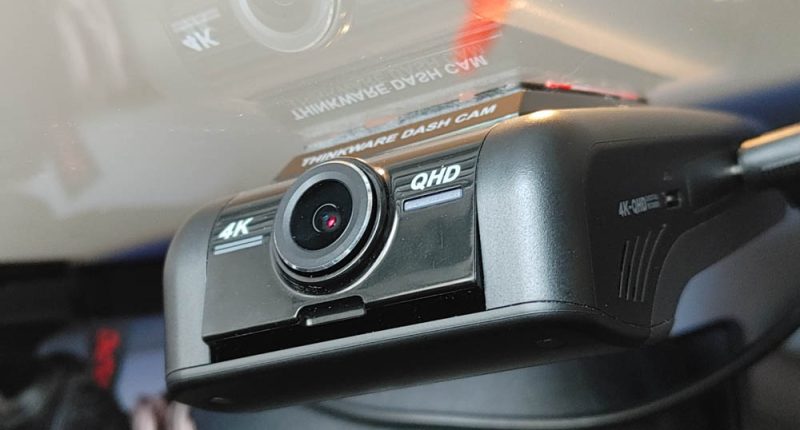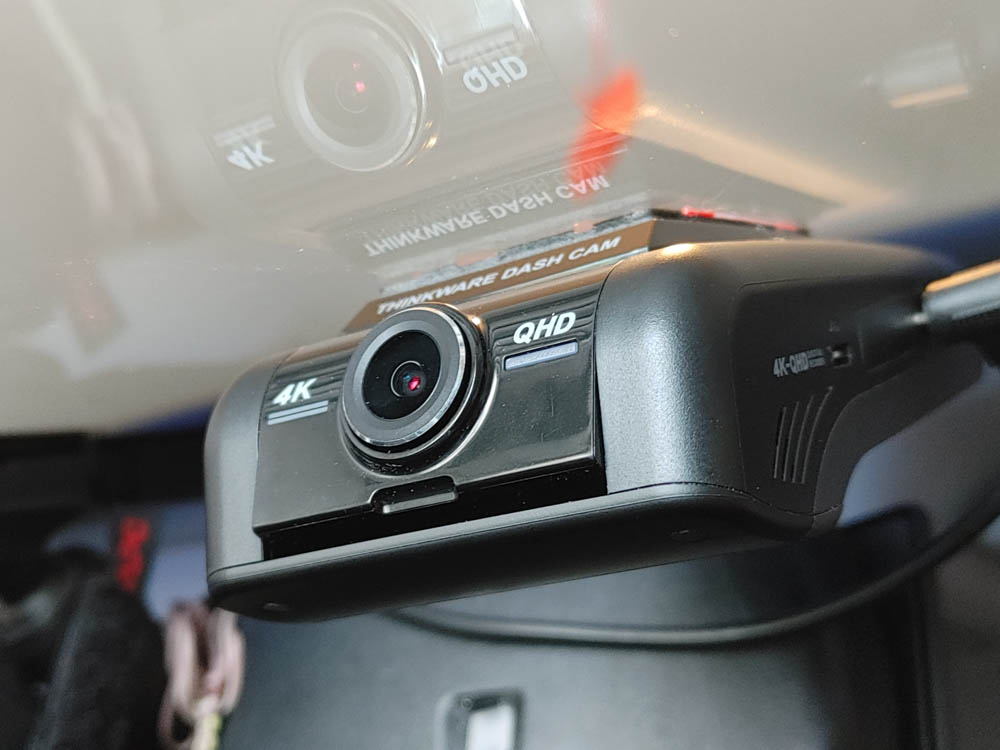
There are several brands that spring to mind when being asked about dashcam recommendations and one of them is THINKWARE. THINKWARE is known for its high end, quality dashcams such as their flagship Q800 PRO. THINKWARE has upped the ante this year with a new king of the hill and that’s their new U1000 which features full 4K (3840×2160) video recording. 4K is the new benchmark for video recording on a dashcam, which offers you more clarity and detail recognition with your videos.
Let’s start with what you get in the box. In my case, you get the main U1000 dashcam unit, power cable, a 32gb microSD card and card reader, cable clip organizers, a CPL filter, and extra 3M tape. You pretty much get everything you need for a clean installation.
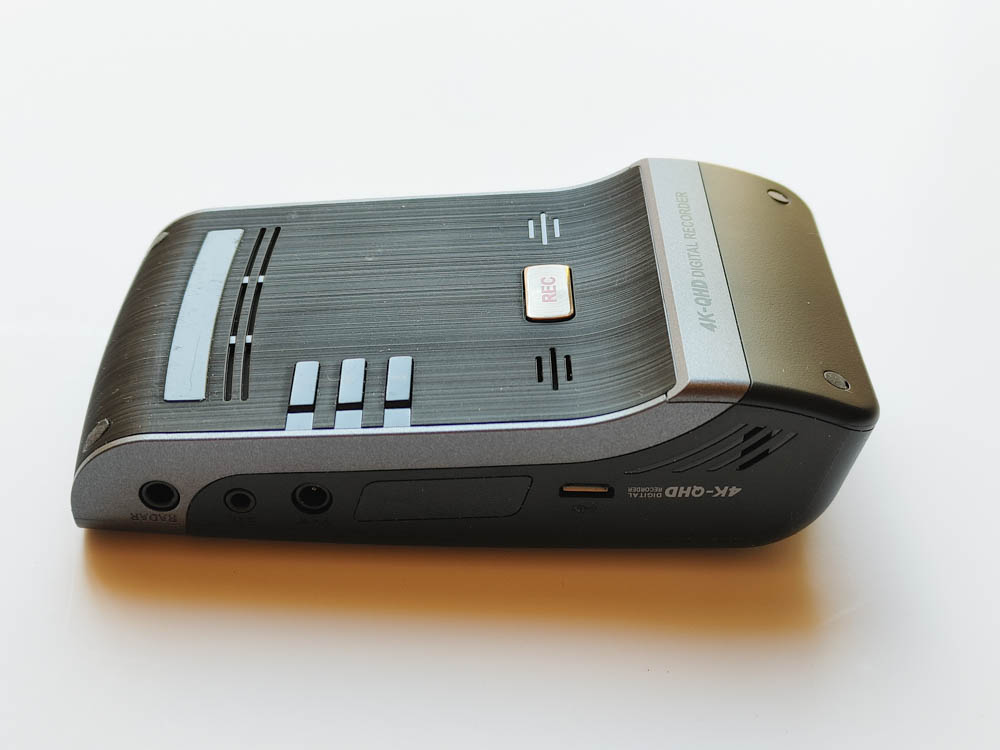
DESIGN
The THINKWARE U1000 itself looks nothing like other THINKWARE dash cams. In fact, that seems to be a thing with them. All their different series of dashcams look different and help distinguish them from each other. The U1000 is a bit larger than their other flagship, the Q800Pro. This one kind of looks like a men’s beard shaver with a camera lens attached to it. While it is a bit large, I’m sure that’s to house a lot of the tech that makes the U1000 their most advanced dash cam right now.
There is no display on the Thinkware U1000 but there are a a few buttons on it. The buttons on the U1000 are for power, to turn off and on the Wi-Fi, and to turn on and off the mic. There is also a dedicated record button if you need to record something in an emergency and want to make sure it gets saved.
Spec-wise, you’re looking at a 4K UHD camera (3840×2160 @30fps) or 2K QHD (2560×1440 @ 60fos). The camera utilizes a Sony STRAVIS 8.4MP sensor combined with a lens featuring a viewing angle of 150-degrees. The U1000 also has built-in GPS and Wi-Fi with the option to add-on a radar module and a rear camera. For the most part, these are very good specs and in-line with what would be considered flagship in 2020.
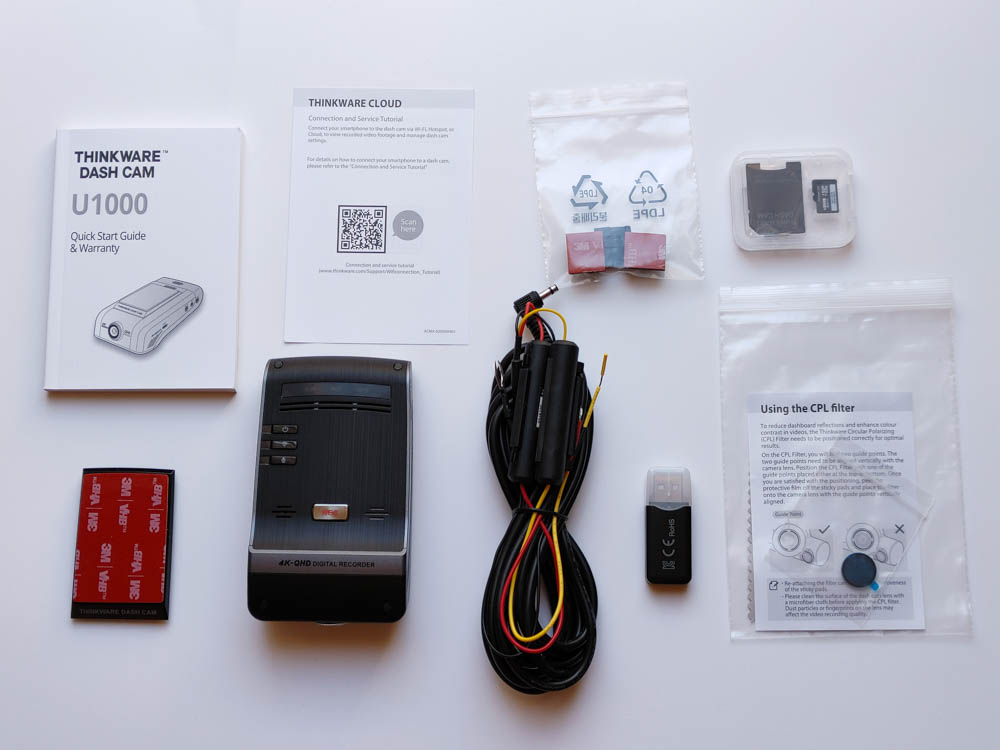
INSTALLATION
The THINKWARE U1000 attached to your front windshield via a 3M mount and sits flat against your window. The only adjustment that needs to be made is with the camera lens that can swivel up and down. There is no display on the U1000, so you’ll need to download the THINKWARE Cloud app for setup and usage.
The installation will take some time depending on which method you choose. If you hardwire it, you’ll need to at least know what you’re doing, otherwise get someone who does to help you. There’s also the 12V plug option which simplifies things. Just note that the THINKWARE U1000 has a proprietary power port on it which means you can’t use a USB cable to power this thing.
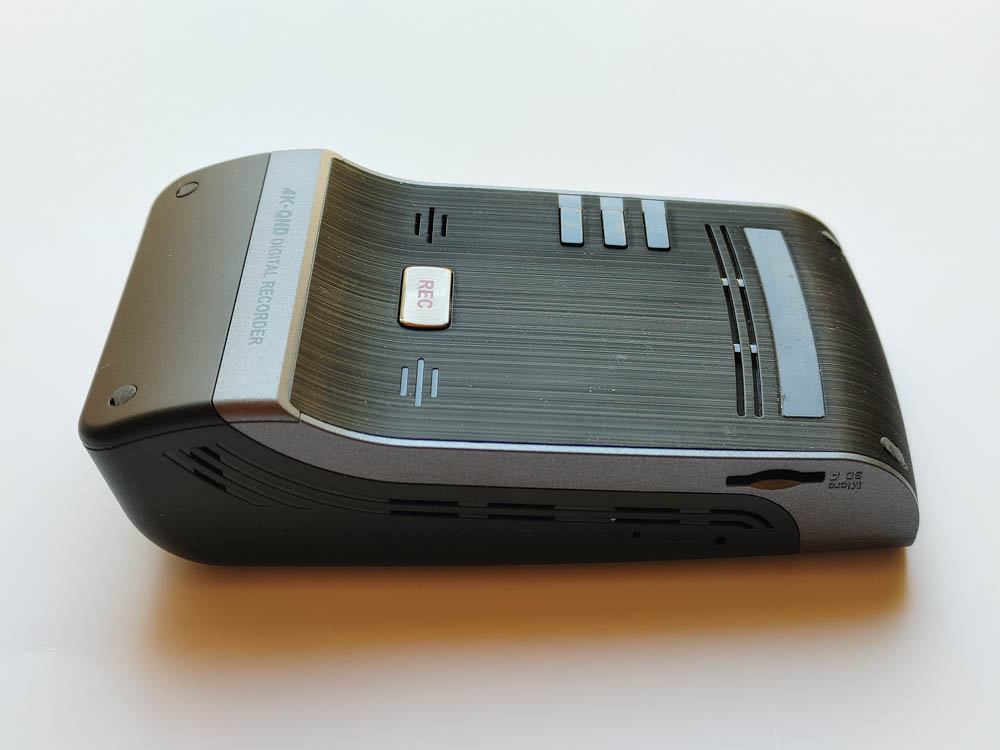
EXPERIENCE
Like with other THINKWARE dash cams, the THINKWARE U1000 is a set it and forget it device. Turn on your car and the dashcam turns on to begin automatically recording. When the memory card starts to fill up, it will overwrite older videos and loop back around. The only videos that don’t get overwritten are those that are saved.
When the device senses a bump or some kind of collision, it’ll save whatever video it is currently recording to a separate folder that will not be overwritten like the regular files are. You can then later transfer those files via the companion app or pop the memory card out and view it on your computer.
Video quality is on par with other 4K dash cams I’ve looked at, meaning there is a lot of detail captured thanks to the higher resolution. License plates, text on buildings, street signs – those all become much more clear at 4K. The colors that the Thinkware U1000 captures are also quite vivid and accurate. Basically, you won’t be disappointed.
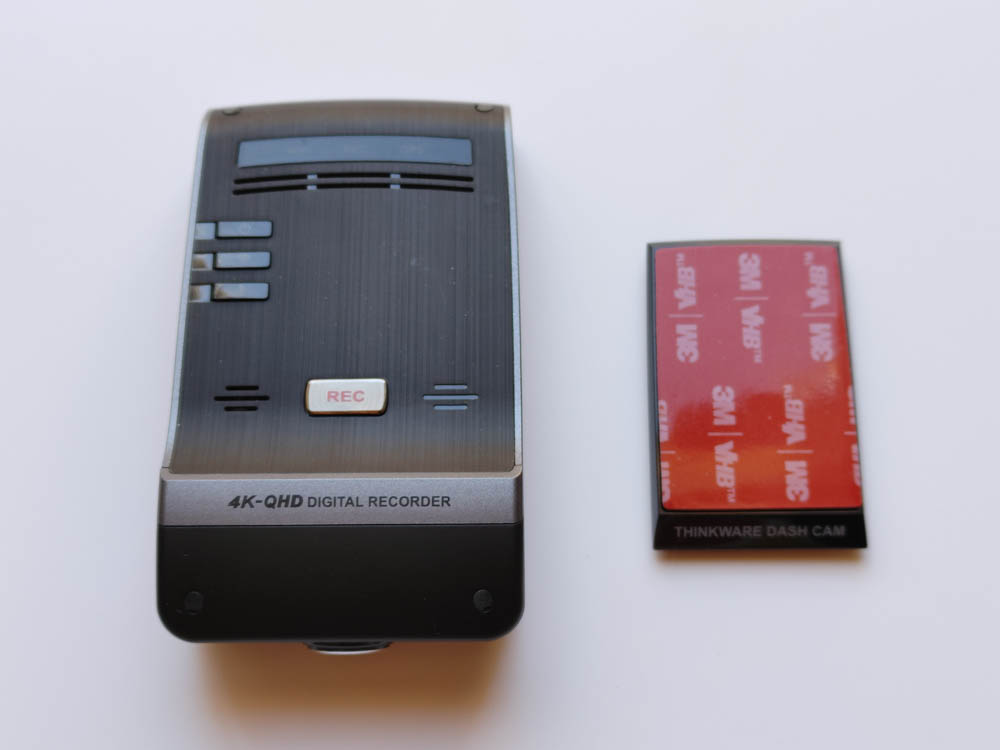
ISSUES
There are a couple of small issues with these THINKWARE dash cams that should be addressed, especially if you’ve owned other non-THINKWARE branded dash cams. If you don’t have a dashcam currently, then you can disregard this part. I mentioned this briefly above, but all THINKWARE dash cams have a non-standard power port (DC-IN). Most dash cams I’ve used have some type of USB port, whether it be micro, mini, or USB-C. This means that if you want to upgrade dash cams, it just makes it easier to swap if you already have all your wiring tucked in your vehicle. With the THINKWARE stuff, you’ll need to rewire everything, unless you already previously had another model.
Also, the Thinkware Cloud app for your phone doesn’t entirely work all the time. Sometimes there are issues connecting to the camera with it. MY suggestion really is to only use the app for setting up the camera and then that’s it. If you want to pull video, just take the card out and put it in your computer to transfer.
Other than that little annoyance, the THINKWARE U1000 is a solid dash cam and the current THINKWARE flagship. 4K recording is honestly the new benchmark that all-new dashcams should strive. It just records so much more detail and information that regular 1080p HD just can’t match. I think it also helps that the U1000 can be upgraded by adding a Rear Camera Module that can record up to 2K QHD and a new Radar Module that I haven’t seen before.
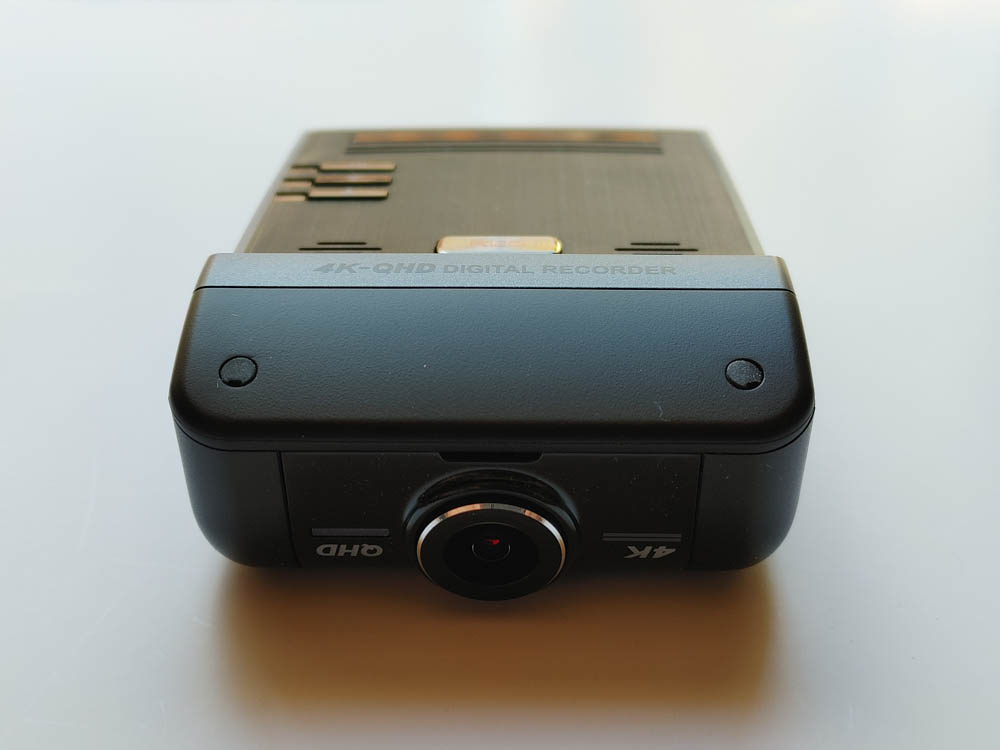
FINAL THOUGHTS
The THINKWARE U1000 doesn’t come cheap though with a starting price at $499.99 for the base kit. The Rear Camera will set you back an additional $99.99 and the Radar Module for $89.99. It does seem a bit pricey, considering this dash cam doesn’t even have a display on it, but generally speaking, THINKWARE dash cams are normally considered some of the best out there and the U1000 doesn’t disappoint.
With that said, is the THINKWARE U1000 right for you? That’s entirely your decision. It has many of the features that are important for a dash cam these days which makes this highly recommended.
You can grab your own Thinkware U1000 on Amazon here.
